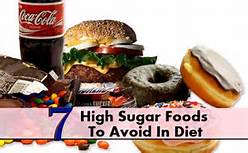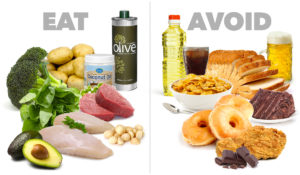Gluten-Free Junk Food
Gluten-free is all the rage these days.
About a third of people in the US are actively trying to avoid gluten, according to a 2013 survey.
The problem with many gluten-free diets, is that people replace the gluten-containing foods with processed junk foods that happen to be gluten-free, what good is that going to do you in healthy eating (nothing).
These gluten-free replacement products are often high in sugar, unhealthy oils and refined grains like corn starch or tapioca starch. These refined starches lead to rapid spikes in blood sugar, and are extremely low in essential nutrients.
Alternatives: Choose foods that are naturally gluten-free, like unprocessed plants and animal foods. Gluten-free junk food is still junk food.
Agave Nectar
This is a sweetener that is often marketed as healthy.
However, agave nectar is not as healthy as some people think. It is a highly refined sweetener that is extremely high in fructose.
High amounts of fructose from added sweeteners (not whole fruit) can be absolutely a disaster for your health.
The truth is, agave is even higher in fructose than other sugars.
Whereas table sugar contains 50% fructose, and high fructose corn syrup around 55%, agave nectar is 85% fructose.
Alternatives: Stevia and erythritol are healthy, natural and calorie free=stevia and erythritol..
Low-Fat Yogurt-it can be incredibly healthy.
Unfortunately, most yogurts found in the grocery store are extremely bad for you.
They are frequently low in fat, but loaded with sugar to make up for the lack of taste that the fats provided.
Put simply, the yogurt has had the healthy, natural dairy fats removed, only to be replaced with something much, much worse.
Additionally, many yogurts don’t actually contain probiotic bacteria, as generally believed. They have often been pasteurized. This occurs after fermentation, which kills all the bacteria.
Alternatives: Choose regular, full-fat yogurt that contains live or active cultures (probiotics). If you can get your hands on it, choose yogurt from grass-fed cows.
Low-Carb Junk Foods
Low-carb diets are very popular these days, and have been for several decades.
There are plenty of real foods that you can eat on a low-carb diet, most of which are very healthy.
However, this is not true of processed low-carb replacement products, such as low-carb candy bars and meal replacements.
These are generally highly processed foods that contain very little actual nutrition, just a bunch of artificial ingredients mixed together and then sold as food.
Alternatives: If you’re on a low-carb diet, eat foods that are naturally low in carbs. Low-carb junk food is still junk food.
Ice Cream
Ice cream is one of the most delicious foods on the planet.
Unfortunately, it is also one of the unhealthiest. Most commercial ice cream is loaded with sugar.
Ice cream is also high in calories, and it is very easy to eat excessive amounts. Eating it for dessert is even worse, because then you’re adding it all on top of your total calorie intake.
Alternatives: It is possible to make your own ice cream using healthier ingredients and significantly less (or no) sugar.
Candy Bars
Candy bars are incredibly unhealthy
They are high in sugar, refined wheat flour and processed fats. They are also very low in essential nutrients.
Processed foods like candy bars are generally engineered to be super tasty (so you eat more), and have been designed so that it’s very easy to eat them quickly.
A candy bar may taste good and cause some short-term satiety, but you’ll be hungry again very quickly because of the way these high-sugar treats are metabolized.
Alternatives: Eat a piece of fruit instead, or a piece of real high-cocoa dark chocolate.

